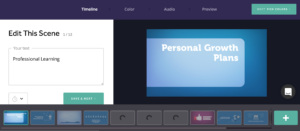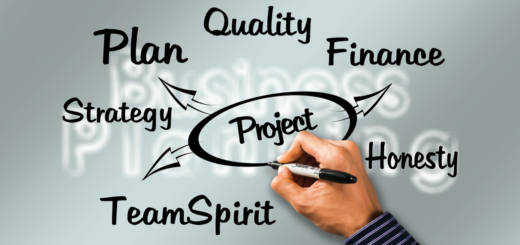From PD to Professional/Personal Learning
We have talked about the need to change our classrooms from teacher-centered to student-centered a lot over the last year on this blog. Making the shift to a constructivist classroom takes a great deal of work. If we want to shift to this culture at our schools, we need to consider how we deliver professional development. And in fact we need to change what we call it. As we discussed when transforming our classrooms, words matter. By changing the vocabulary from classroom to studio our minds immediately conjure up new possibilities. We would like to make that change in teacher training as well. What if we shifted from professional development to professional/personal learning?
When one hears “professional development” you think about sitting in a training where more often than not you are thinking about other things rather than engaging in the sit and get presentation. It’s not that we don’t have professional development opportunities, in fact 90% of teachers report attending professional development. Unfortunately most of those teachers found it totally useless (Darling-Hammond et al, 2009). Even if you are engaged in learning about what is being delivered there is little or no time to actually implement the ideas. And if you do have time to implement it you invariably aren’t going to be wildly successful the first time. As Bradley Ermeling found in his study most teacher’s first attempts in implementation, even with training, are unsuccessful and messy (Ermeling, 2009).
My friend Patrick Reid posted a great graphic on Twitter the other day about the effectiveness of professional learning. (Reid, 2017)

Effective Professional Learning by Patrick N. Reid is licensed under a Creative Commons Attribution-ShareAlike 4.0 International License.
As Patrick notes we need to take the lead of the Mirage report and redefine, reevaluate and reinvent how we train teachers. We need to utilize the five principles of effective professional learning to make this change. We need to shift away from our current system of one-size fits all workshops to a more personal professional growth model.

That’s why over the next month I will be working on a new way to develop educators.
Here is an intro video to show you where I am headed:
Personalized Learning Draft 1 on Biteable.
Behind the Scenes
I started with the principles from Nancy Duarte’s video on Storytelling.
I wanted to lay the foundation for the transformation story she talks about. I start with facts about why we experience trouble in our current professional development opportunities with some research. Then I talk about how our classrooms understand differentiation but our professional learning often doesn’t follow these best practices. Then I tease the audience with a proposed solution….Professional Growth Plans. I wanted to keep this general and make the audience curious so I didn’t use a voice-over to explain too much. I envision this as an intro to a face-to-face meeting where we will lay out the plan in more detail. I can also see it going out the week before in an email so people will start wondering about what Personal Growth Plans are so they come to the meeting intrigued.
As anyone who reads this blog knows, I am always trying to learn new things so I tried a new program to make this video. One of my other friends, Rachelle Wooten, turned me onto Biteable.com. It allows you to make interactive videos simply and concisely. Initially I had some trouble making the scenes work in the correct timing I needed. I started by trying to duplicate a slide to make it longer but because of the animation in the scene that didn’t work. Then I realized even though it starts with a template, you can change each scene out. Some scenes allow the text to stay up longer so that helped me with the timing. My initial draft had all the content but they didn’t really match the visuals so I wasn’t telling a very good story. I went back and then chose scenes where the visuals match the words. For example, I chose the weightlifter to coincide with the slide about sharing our strengths. I hope I got some good visuals that make the message more memorable.
Finally after producing my video I noticed I could add an ending slide which I used for my references. While the formatting isn’t like I would want it, it allows me to give credit to the places I gathered my research from.
I would love feedback on my initial plan and video so please leave me a comment below. In the next few weeks I hope to outline my plan for Personal Growth plans, so stay tuned.
References
Darling-Hammond, L., Chung Wei, R., Andree, A., & Richardson, N. (2009). Professional learning in the learning profession: A status report on teacher development in the United States and abroad. Oxford, OH: National Staff Development Council.
Ermeling, B. (2009). Tracing the effects of teacher inquiry on classroom practice. Teaching and Teacher Education, 26 (3), 377-388.
Nancy Duarte: How to Tell a Story (3:01)
Publlished by: Stanford Graduate School of Business 03.2013
YouTube URL: https://www.youtube.com/watch?v=9JrRQ1oQWQk
Patrick Reid. (2017).Professional Learning Effectiveness [Infographic] #DLL. Retrieved from https://twitter.com/patrickreid28/status/840581443692711936.
TNTP. (2015). The Mirage: Confronting the Hard Truth About Our Quest for Teacher Development. Retrieved from http://tntp.org/publications/view/evaluation-and-development/the-mirage-confronting-the-truth-about-our-quest-for-teacher-development




